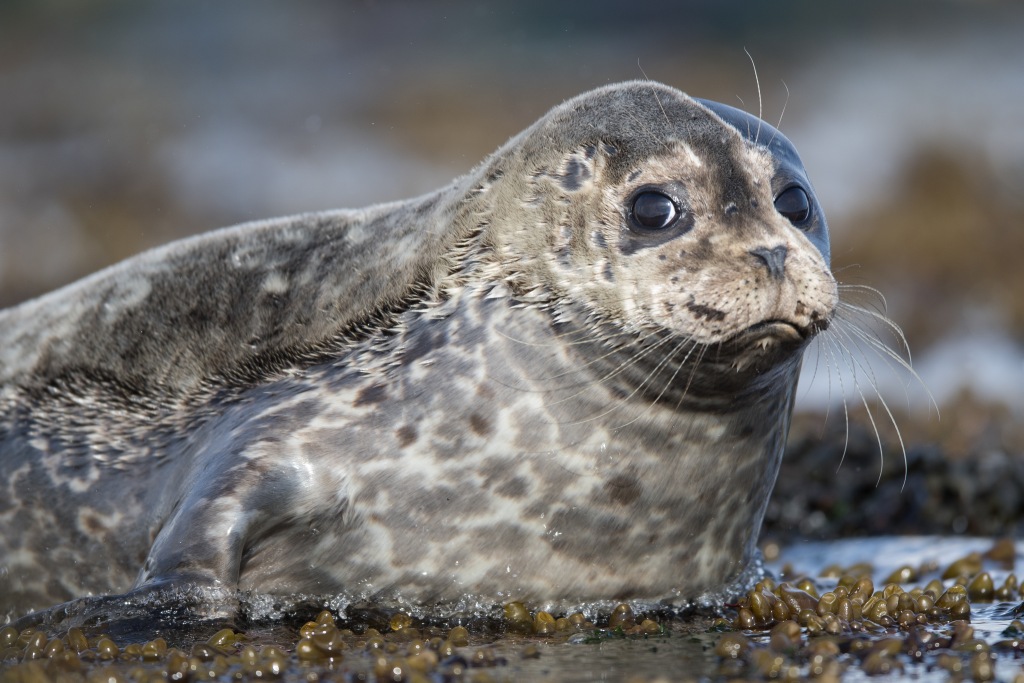Thanks to the help of WWF Russia in 2021, the CINBR will receive data on harbor seals life again.
Harbor seal Phoca vitulina Linnaeus, 1758, has a Red Book subspecies of Phoca vitulina stejnegeri.

Harbor seal on the island of Medny, the CINBR. Photo by Anastasia Panfilova
Great news - the CINBR will be able to continue studying the harbor seal, or the flower seal, as we sometimes call it, using the most modern technologies. This became possible as the Commander Islands Nature Reserve won WWF Russia Grant Competition for Nature Reserves and National Parks. The 13 best environmental projects, selected by the jury, are aimed at studying vulnerable ecosystems, monitoring and preserving rare species.
.jpg)
.jpg)
Employees of the CINBR monitor the net for harbor seals. Photo by Julia Darkova
.jpg)
Catching an harbor seal. Photo by Julia Darkova
.jpg)
Weighing of a harbor seal. Photo by Julia Darkova
Harbor seal is a rare subspecies of the common seal, listed in the Red Book of Russia, the most numerous and permanent inhabitant of the coastal waters of the islands of the real seals. It forms a large number of permanent habitats along the coast of the islands. Specialists spotted more than 40 groups on Bering Island, and more than 20 on Medny Island.
.jpg)
Common seal Phoca vitulina Linnaeus. Photo by Ulyana Ledok
Harbor seals are both curious and cautious animals, attentive lone seals will definitely accompany and consider those walking along the Pacific coast, but if any activity is spotted on the shore they will return to a safe distance. As scientists managed to find out with the help of satellite tags, harbor seals are "home-birds". Thanks to the use of tags, it was possible to find out that the animals do not swim away from the place where they were caught, farther then 20 kilometers. According to the very first assumptions, this is due to favorable conditions for them in the waters of the Commander Islands. There are no factors of concern for them, food resources and places of rest are evenly distributed, so there is no need to leave their native places.
.jpg)
Harbor seal in Buyan Bay, the CINBR. Photo by Ulyana Ledok
On the Commander Islands, in the CINBR we protect and study eared seals, which include the northern fur seal and sea lion, as well as true seals, one of which is the harbor seal.
.jpg)
Harbor seal near Toporkov Island. Photo by Alexey Perelygin
Thanks to the financial assistance of WWF Russia, the Commander Islands Nature Reserve was able to purchase 6 tags for installation on harbor seals, which will transmit data about animal movements.
.jpg)
Installation of a satellite tag for tagging the harbor seal. Photo by Julia Darkova
As a result, the reserve is already receiving important information about the life of the flower seal, information on routes, specifics and peculiarities of movements, as well as behavior, both on land and in water.
In addition to research using satellite tags, scientists of the reserve measure the length and weight of the animal's body, take samples for genetics, fur and vibrissa samples to analyze heavy metal contamination, and this year for the first time we began to study the nutrition of harbor seals by washing the intestines.
.jpg)
Intestinal lavage to study the nutrition of anthurs. Photo by Julia Darkova
.jpg)
Selection of samples of harbor seal fur. Photo by Julia Darkova
The CINBR has been conducting anthur research since 2019, and work in 2021 was started in April.
Read more about previous research in our article.
.jpg)
Installation of a satellite tag for tagging the harbor seal. Photo by Julia Darkova
.jpg)
At the end of the study, the harbor seal with the satellite tag installed is set free. Photo by Julia Darkova
The CINBR is grateful to WWF Russia for choosing our project as one of the winners of the competition! Such studies make it possible to obtain new data on the ecology of the Anturs, which means the preservation of this charming and curious animal for the future of Kamchatka and the whole country. The CINBR team would like to thank all WWF Russia supporters, people who are not indifferent to the future of the most fragile corners of our planet. It is thanks to your support that such important projects are being implemented!









